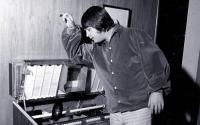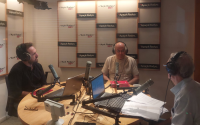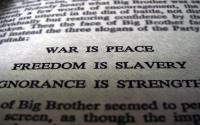1 June 2006The Independent
The great grandson of the Apache leader Geronimo has appealed to the big chief in the White House to help recover the remains of his famous relative - purportedly stolen more than 90 years ago by a group of students - including the President's grandfather.
The story that members of Yale University's secret Skull and Bones society took the remains - including a skull and femur - from the burial site in Fort Sill, Oklahoma, has long been part of the university's lore. But a university historian recently recovered a letter from 1918 that appears to support the story that members of the society did indeed take the remains while serving with a group of army volunteers from Yale, stationed at the fort during the First World War.
The students - among them, Mr Bush's grandfather Prescott - apparently returned with the remains and kept them in their society's headquarters at the university in New Haven, Connecticut. The society's initiation rite reportedly involves kissing a skull, referred to as "Geronimo", usually held in a glass case.
The letter from society member Winter Mead to fellow member F Trubee Davison, made public earlier this month, said: "The skull of the worthy Geronimo the Terrible, exhumed from its tomb at Fort Sill by your club... is now safe inside the [tomb] together with his well worn femurs, bit and saddle horn."
The famous Indian chief's great-grandson is appealing for President Bush's help in recovering the remains. Speaking from his home in Mescalero, New Mexico, Harlyn Geronimo said: "I am requesting his help in getting the remains - the skull and the femur - returned, if they were taken. According to our traditions the remains of this sort, especially in this state when the grave was desecrated ... need to be reburied with the proper rituals. To return the dignity and let his spirits rest in peace ... is important in our tradition." The letter was discovered by the Yale historian Marc Wortman and published in the Yale Alumni Magazine. Mr Wortman said there was still scepticism as to whether the remains were those of Geronimo - something that could probably only be proved by carrying out DNA tests.
"What I think we could probably say is they removed some skull and bones and other materials from a grave at Fort Sill," he said.
"Historically, it may be impossible to prove it's Geronimo's. They believe it's from Geronimo." Geronimo, a leader of the Chiricahua Apache, is remembered as one of the last Native American leaders to hold out against the forces of the US government. He eventually surrendered in Skeleton Canyon, Arizona, in 1886 and was moved first to Florida and then Oklahoma. He died of pneumonia at Fort Sill in 1909, and was buried at the fort's Apache Indian Prisoner of War cemetery.
The White House yesterday did not return calls seeking a comment. A Yale spokeswoman, Dorie Baker, said the university could not comment because the Skull and Bones was a separate entity and that because it was a secret society "we don't know anything". The society has not commented on the issue.
Life of a warrior
Geronimo's real name Goyathlay literally meant "one who yawns", but any further comparisons with lethargy stop there.
The Chiricahua Apache leader was head of one of the last American Indian fighting forces to formally capitulate to the United States, and gained a reputation for his bravery and ability to dodge bullets.
The feared Apache warrior took up arms against the Mexicans, and later the Americans, after Spanish troops massacred his wife and three children in 1858. His tribe was later forcibly moved by the US government to arid reservations.
Geronimo and his 35 warriors avoided the combined armies of Mexico and the US for a year before being captured in 1886 by General Nelson A Miles at Skeleton Canyon, Arizona.
Geronimo became something of a national celebrity, despite being a prisoner. He evenrode in Roosevelt's 1905 inaugural parade, but still died a prisoner of war far from his homeland.






